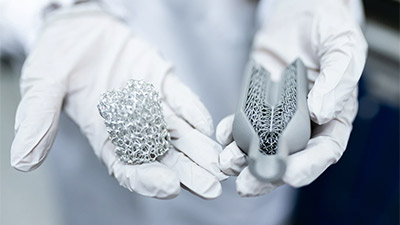
Sandstone is used in ColorJet and MJF 3D printing for creating full-color prototypes and mock-ups. This material can be colored with inks and fused with decent precision which allows using it for visually pleasing and presentable models. Aside from that, sandstone is commonly an additive to construction mixtures and grindstones.
Commandez en Sandstone

Sandstone is a mineral powder that has been a popular construction resource since ancient times. The average chemical composition of sandstone is quartz in tiny grains. Notable properties of sandstone include hardness and chemical stability. This material can survive several recycling processes. Sandstones differ by texture, hardness, color, and porosity.
What you need to keep in mind though is the technology behind 3D printing with sandstone. The grains undergo forming with the help of a binding agent. Thus, despite sandstone commonly being hard, sandstone parts printed with binder jetting methods are commonly brittle and aren’t used for mechanical or stress-induced pieces.
Alternatively to a 3D scan, you can try out DIY methods of getting a 3D model of yourself such as taking photos from various angles and combining them.
Tous les commentaires (0)